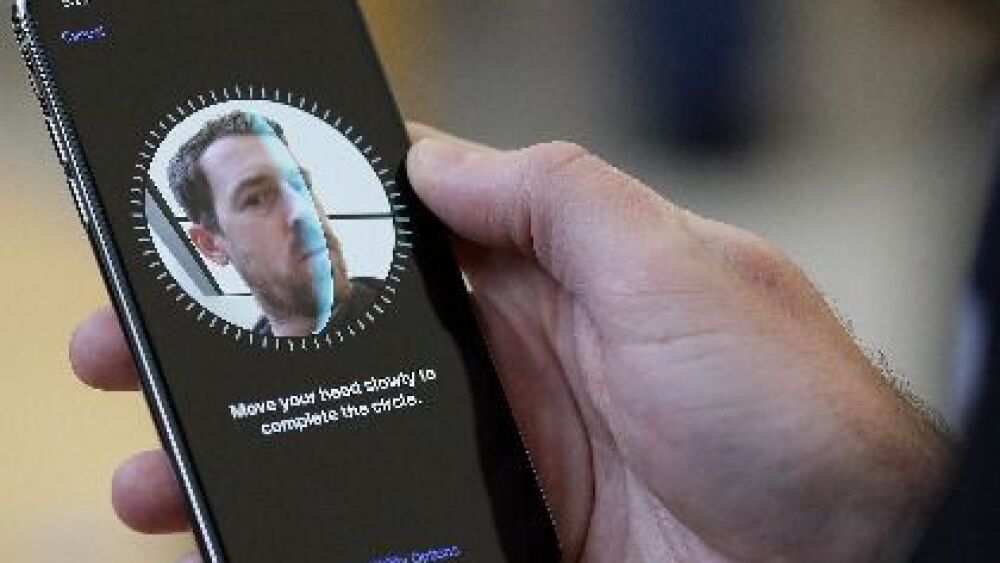Few forces are impacting law enforcement like video. Policing in the Video Age, P1’s yearlong special editorial focus on video in law enforcement, aims to address all facets of the topic with expanded analysis and reporting.
In the final installment of this four-part signature coverage effort, we take a look at the future of video in policing. Click here to learn more about the project.
Also be sure to check out our latest PoliceOne Digital Edition – 2018 Police Video Guide: The emerging tech, training and tactics shaping law enforcement – in which we explore how departments can best utilize emerging video technologies to enhance police officer safety and improve operational efficiencies. Download the free guide here.
Facial recognition technology (FRT) is a software application capable of uniquely identifying or verifying a person by comparing and analyzing patterns based on the person’s facial contours.
The Fourth Amendment protects people from warrantless government searches or seizures where they have a subjective expectation of privacy that is deemed reasonable by public norms. The reasonableness standard is decided on the totality of circumstances.
This is why the expanding commercial use of FRT is interesting. If citizens willingly permit widespread use of FRT outside of law enforcement, an argument could be made that they no longer have any reasonable expectation of facial privacy.
Expanding commercial uses of facial recognition software
In 2008, Lenovo released a line of laptops that allowed users to log on using their face instead of a password. Windows 10 does the same.
Facebook, Apple and Google use facial recognition to assist in “tagging” images – identifying someone in a photo by name.
Other online services that have used facial recognition include:
- Face recognition search engines;
- Stylecaster – a website that allows women to upload their image and try on different makeup, clothes, and hairstyles;
- Snapchat – An image messaging app that allows users to apply lenses to photos using FRT
In 2012, 20 percent of all smartphones shipped had facial recognition capability. It’s estimated that by this year, 665 million smartphones and tablets will include facial recognition.
In 2015, China unveiled the first facial recognition ATM. Facial recognition has been incorporated into smart TVs by LG, Samsung and Panasonic. The TV set offers menus based on who’s watching. The Nielsen company is exploring the use of smart TVs for measuring ratings and determining who’s watching shows and ads.
In February 2016, MasterCard announced it would accept “selfies” in place of passwords for signing into accounts. Similarly, Amazon filed a patent in March 2016 for a program that will allow users to authorize purchases by taking selfies.
Retailers are increasingly using the technology not just to prevent loss by identifying shoplifters but to improve sales by tracking legitimate shoppers. The Atlanta-based ad agency Redpepper is testing their project -- Facedeals. Users grant Facedeals access to their Facebook; Facedeals then learns the user’s face. The idea is that stores, bars and restaurants rigged with Facedeals cameras will “recognize” users who have opted into the program – and will text a customized coupon to the user’s phone based on their social media activity.
Pushback against facial recognition use in the commercial sector
In Orwell’s dystopian novel, “1984,” everyone knew they were being watched and recorded by “The Party.” The leader of The Party was called “Big Brother.” From that came a pop culture phrase -- “Big Brother is watching you.” It was my generation’s metaphor for government intrusion.
But in 2013, one of the pioneers of FRT, Joseph Atick, told 60 Minutes, “Big Brother is no longer big government; Big Brother is big business.”
More recently, the movie “The Circle” based on Dave Eggers’ book imagines an alarming reality where everyone’s personal information is readily shared and available on the internet. The Circle (a thinly-veiled, fictitious Facebook, Amazon and Google combined) would eliminate the need for search warrants.
The FBI’s amassing of 411.9 million facial images for its Next Generation Identification (NGI) program has garnered plenty of media attention, but that lags well behind Facebook’s 1.65 billion users. Facebook has the largest biometric database in the world – “and it’s all been formed by people voluntarily submitting pictures to Facebook and identifying who they belong to,” says Amie Stepanovich, director of the domestic surveillance project at the Electronic Privacy Information Center in Washington, D.C.
Facebook has refused to answer questions about what it does with its facial recognition information. Social media companies rarely talk about their internal systems. But in 2012, Facebook bought Face.com, whose company’s founders had published a paper titled “Leveraging Billions of Faces to Overcome Performance Barriers in Unconstrained Face Recognition.”
Like the FBI’s NGI program, the commercial sector’s use of FRT is getting pushback. In 2014, the U.S. Department of Commerce held talks about whether and how commercial FRT should be regulated. The negotiations included representatives from consumer-advocacy groups and the tech industry. User privacy groups, including Electronic Frontier Foundation and the Consumer Federation of America, walked out. The industry and its lobbyists, they said, wouldn’t even admit that users might want to consent to facial-recognition software so it was no use participating in the talks.
Recently, the Illinois Biometric Information Privacy Act has become the basis of a number of lawsuits against tech giants Facebook, Google, Shutterfly and Snapchat, with consumers claiming their biometric information was handled illegally.
One of the most-watched suits is that of three Illinois plaintiffs against Facebook, alleging the tech giant’s collection, storage and subsequent use of biometric information without informed consent invaded their privacy. That case is making its way toward trial – or a settlement.
In Europe and Canada, privacy advocates won a victory last year when Facebook launched its photo app, Moments, without facial recognition scanning.
Plenty of Americans still feel they have some privacy rights to their faces – at least from being identified without their consent by businesses or the government. I wonder what they’ll do if Facebook refuses to back down and tells them they can always opt out of Facebook. I wonder what they’ll do when TSA offers a quick pass based on facial recognition to those who voluntarily participate, or retailers offer them discounts based on FRT.
If law enforcement waits awhile, the norm may well be that citizens have dealt away their facial privacy rights.




